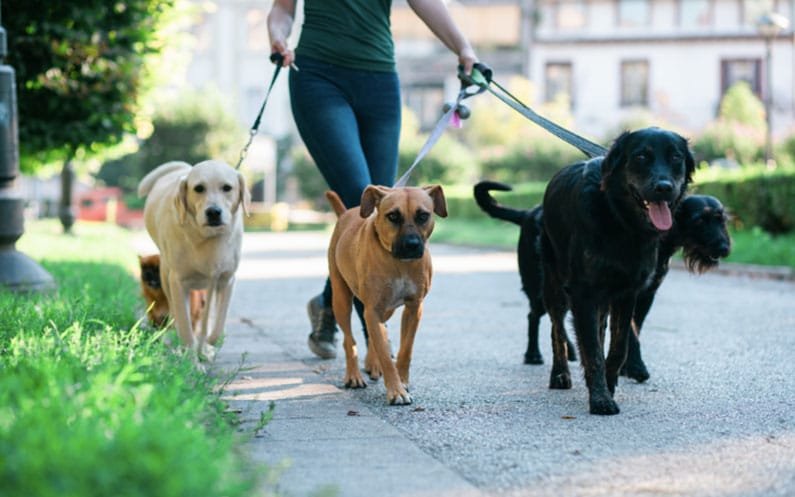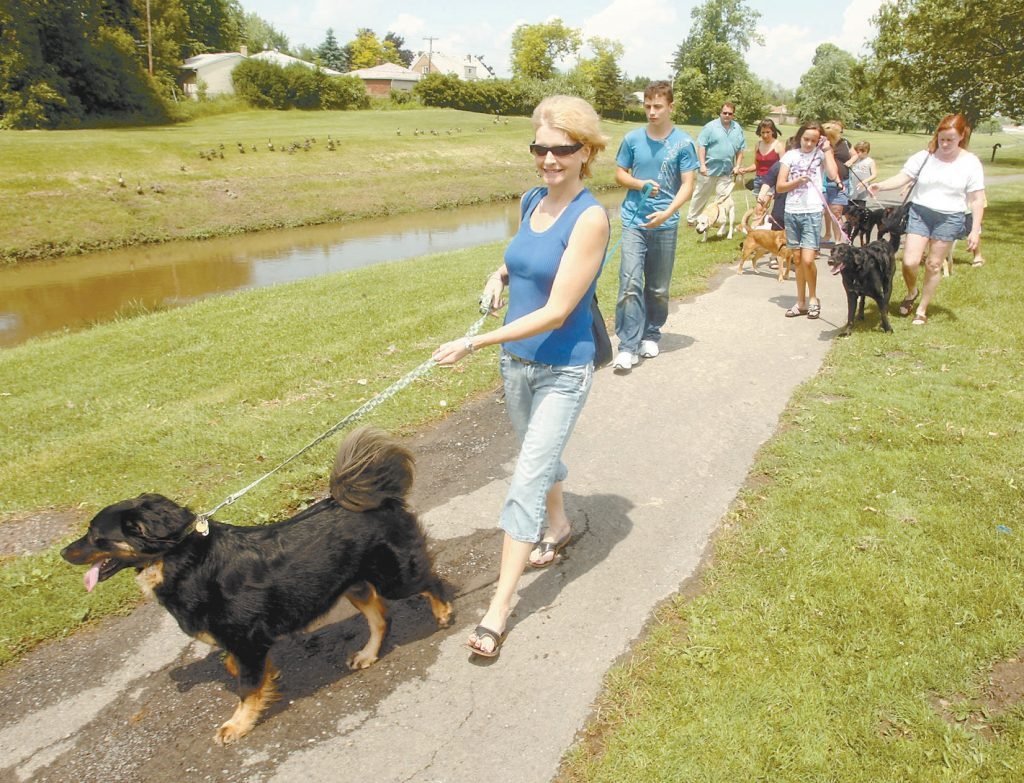Whether you’ve mastered the dog walk like Cesar or still have issues with your dog, there are certain do’s and don’ts that we should all follow to make for a more pleasant, safer walking experience.
It goes without saying that you should always pick up after your dog and never go on a walk without an adequate supply of pick-up bagson hand. But there are less obvious rules that, when followed, eliminate a lot of possible issues and problems with other people and dogs you may encounter along the way.
1. Know your dog: That is, you should know the sort of thing that might put your dog in an undesired state. Does she have issues with people in uniforms, like letter carriers or UPS drivers? Does she bark at or try to chase bicyclists or skateboarders? Does she go nuts on sight of a squirrel or other dog?
In an ideal world, of course, you will work with your dog to eventually eliminate those bad reactions, but in the meantime you can minimize them by calmly avoiding situations that could trigger your dog.
Note the key word “calmly.” If you become anxious about a person or animal approaching, your dog will sense this and possibly go into alert mode. You need to train yourself to spot the situation without reacting to it, and then change direction, move off of the sidewalk, or whatever else you need to do without making a big deal out of it.
This way, to your dog, you’re simply altering direction on the walk, nothing more nor less.
2. Be aware of what’s around you: Of course, in order to be prepared to avoid situations that might set your dog off, you need to be aware of them before your dog has noticed. Always walk with your head up and eyes forward, scanning the area.
Not only will this help you to spot any possible things to avoid, but this posture and alertness will help you to assume a calm assertive state naturally. Your confidence will help your dog stay calm and submissive.
Don’t forget that there are probably cars driving around near you — because your dog won’t be paying attention to them. Being aware and staying alert is the best way that you can avoid either of you being struck by a car that suddenly pulls into or out of a driveway, or that doesn’t fully stop at an intersection.
On a related note, it’s always a good idea to train your dogs to stop and wait at the curb until you tell them it’s all right to go; you “tell” them that when you step into the street yourself.
3. Learn how to read other dog walkers: Not everyone out there is in full control of their dogs on the walk, and the walkers who aren’t in control are also the ones most likely to cause some sort of incident, whether it’s dogs barking at each other, jumping on or snapping at people, or getting loose.
It is an acquired skill, but with practice you can learn to tell whether an approaching walker is in control or not. Is their dog walking next to or just behind them, or is it lunging forward or pulling them off balance? Does their body language project confidence, or do they seem hunched inward and anxious or fearful?
How do they try to correct their dog? If they’re doing it very quietly or non-verbally, then they’re probably in control. If they’re shouting, “No!” at their dog constantly, then they aren’t in control but are very unstable energy approaching. If you can hear them coming before you can see them, then it’s probably best to cross the street or move up onto a lawn or driveway until they’ve passed.
4. Change course the right way: Having to avoid other dog walkers or pedestrians is not the ideal situation, but it can sometimes be necessary to avoid a confrontation. The important part is in how you do it.
As mentioned previously, the trick is to make it appear to be just a normal change in course on your walk. Do not abruptly stop and pull up on your dog’s leash, and do not yank your dog to try to change direction. If you’re going to cross the street, approach the curb normally, wait until it’s clear, and then calmly cross the street with your dog.
If you need to use sound or a verbal cue to redirect your dog, that’s fine. The important part is that you do so calmly and quietly. Remember: Dogs interpret loud human sounds as barking, and barking by one dog often induces excitement in another.
5. Redirect when necessary: If you absolutely cannot avoid the oncoming situation, then you need to redirect both your dog and the other party. Try to move off of the sidewalk as far as possible, using your body to turn your dog facing away, and allow your dog to lower her head; the grass may have enough interesting smells to keep her completely distracted.
At the same time, give a friendly warning to the other person. For example, if they’re walking a dog you can let them know your dog’s issue — “She can be a little leash-aggressive” or “He doesn’t like small dogs.”
If your dog might have an issue with a person, then something as simple as a friendly, “Hello!” can help mitigate any problems by letting your dog know that you aren’t threatened by that other person.





